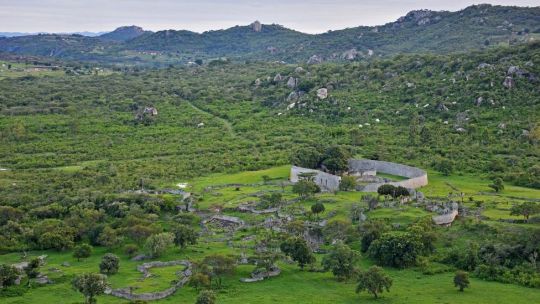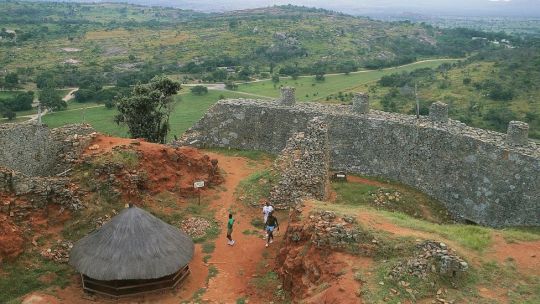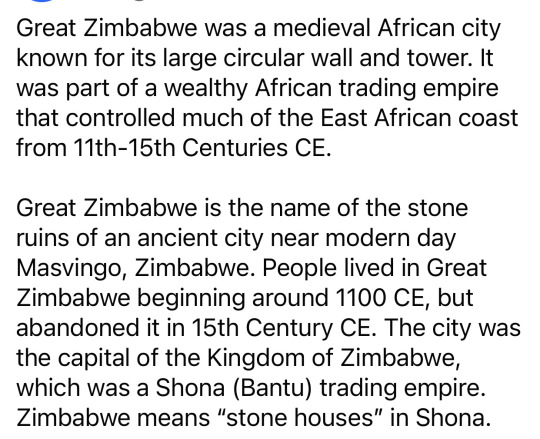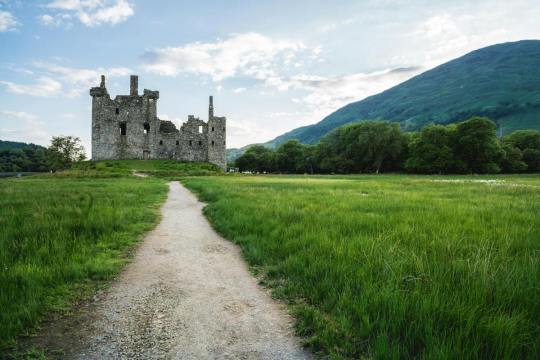#Great Zimbabwe
Text
Time Travel Question 10: Ancient History III
These Questions are the result of suggestions from the previous iteration. I'm combining some similar ones, so some are going to be a little vague. I'm going to also split into a whole lot of different polls because there were so many good and creative ideas. (Seriously, I love the people of Tumblr).
Please add new suggestions for this category below if you have them for future consideration.
You are welcome to suggest specific things from the Library of Alexandria. There will be polls for that.
#Time Travel#The Acropolis#The Library of Alexandria#Eleusinian Mysteries#Indigenous History#Bacchus#Great Zimbabwe#Ancient Egypt#Akrotiri#Thera#Minoan#Jewish History#The First Temple#Picantes#Etruscans#Dacians
392 notes
·
View notes
Text
Africa is a continent of more than 50 countries, and home to thousands of languages and cultures. Africans lived in complex societies, from small villages to large bustling cities, that contained universities, mosques, and libraries.
Africa has great civilizations that flourished in Africa included Egypt, Kush, Axum, Mali and Great Zimbabwe.
Africa's history is complex and stretches back through centuries of dynasties. Africa contributed to our knowledge and understanding of ancient writings, languages, agriculture and engineering. Its extensive trade system connected the continent with Asia and India, producing a lively exchange of goods such as grains, metals, and gold.
Black History instruction in K-12 education, 65% of the 401 educators interviewed said that their state does not mandate Black History instruction. Only 12 states require some form of Black history curriculum.
Africans were free before they were enslaved. Enslaved Africans relied on their knowledge and beliefs to survive slavery, and their contributions to U.S. culture, society, and economy are evident in every aspect of American life and enterprise. Agriculture, music, art, and culinary.
#history#african history#african american#education#Africa#axum#mali empire#great Zimbabwe#world history#public school#ancient
54 notes
·
View notes
Text
BBC: The ancient remains of Great Zimbabwe

The ancient city of Great Zimbabwe was an engineering wonder. But archaeologists credited it to Phoenicians, Babylonians, Arabians – anyone but the Africans who actually built it.
W
Walking up to the towering walls of Great Zimbabwe was a humbling experience. The closer I got, the more they dwarfed me – and yet, there was something inviting about the archaeological site. It didn't feel like an abandoned fortress or castle that one might see in Europe: Great Zimbabwe was a place where people lived and worked, a place where they came to worship – and still do. It felt alive.
Great Zimbabwe is the name of the extensive stone remains of an ancient city built between 1100 and 1450 CE near modern-day Masvingo, Zimbabwe. Believed to be the work of the Shona (who today make up the majority of Zimbabwe's population) and possibly other societies that were migrating back and forth across the area, the city was large and powerful, housing a population comparable to London at that time – somewhere around 20,000 people during its peak. Great Zimbabwe was part of a sophisticated trade network (Arab, Indian and Chinese trade goods were all found at the site), and its architectural design was astounding: made of enormous, mortarless stone walls and towers, most of which are still standing.
However, for close to a century, European colonisers of the late-19th and early-20th Centuries attributed the construction to outsiders and explorers, rather than to the Africans themselves.
Indeed, the author of the first written European record of Great Zimbabwe seemed to be staggered by the very idea that it could have been built at all. Portuguese explorer Joao de Barros wrote in 1552 that, "There is masonry within and without, built of stones of a marvellous size, and there appears to be no mortar joining them."

Built between 1100 and 1450 CE, Great Zimbabwe was large and powerful (Credit: evenfh/Getty Images)
In the Shona language, zimbabwe translates approximately to "stone house", and because of the site's size and scope, it became known as Great Zimbabwe. Moreover, it was not the only such "Zimbabwe": there are remains of approximately 200 smaller settlements or trading posts spread across the region, from the Kalahari Desert in Namibia to Mozambique.
According to Munyaradzi Manyanga, a professor of archaeology and cultural heritage at Great Zimbabwe University, the position of Great Zimbabwe among these settlements has been widely debated. Some people have speculated that it was a capital city of a very large state, but to Manyanga, that seems unlikely. "Such a state would have been too large. One wouldn't have been able to manage that kind of extent and size. So most of the interpretations talk of these as having been influenced by Great Zimbabwe." He added that the Kingdom of Zimbabwe is considered to be made up of Great Zimbabwe and the smaller settlements located closer to it.

The walls, which are made of granite, are stacked precisely and do not use any mortar to hold them in place (Credit: 2630ben/Getty Images)
The walls, which are made of granite, are stacked precisely and do not use any mortar to hold them in place. "The quarrying of the granite, taking advantage of natural processes of weathering and the shaping of it into regular blocks was a major engineering undertaking by these pre-colonial communities," Manyganga said. Iron metallurgy was needed to make the tools required to cut the blocks; it was also needed to make trade goods subsequently found at the site. All of this points to a highly organised and technologically advanced society.
The population of Great Zimbabwe began to decline in the mid-15th Century as the Kingdom of Zimbabwe weakened (possible theories for the decline include a drop in mining output, overgrazing by cattle, and depleted resources), but the site itself was not abandoned. Manyganga explained that it was regularly visited by different Shona groups for spiritual reasons right up until colonisation by the British in the late 19th Century.

Europeans of the late-19th and early-20th Centuries attributed the construction to outsiders and explorers, rather than to the Africans (Credit: Agostini/Getty Images)
A decade later, in a speech to the Royal Geographic Society, British journalist Richard N Hall supported Bent's perspective after visiting the site himself. He talked about the artistic value of soapstone carvings that had been unearthed and the "marvellous cleverness" of a gold-mining operation that spanned hundreds of mines, before concluding that "it is quite a moral certainty that even the cruder methods of [these sciences'] application were imported from the Near East, and did not originate in South-East Africa." Instead, he and his colleagues held that Phoenicians, Arabians or Babylonians created the city.
According to Manyanga, "They wanted to use [this explanation] as a moral justification for colonising Zimbabwe. If there was this long-lost civilisation in this part of the world, there was nothing wrong with colonialism because they were resuscitating this old kingdom."
However, a few archaeologists of the time countered that the site was not nearly old enough to be from Biblical times. "The then-colonial government suppressed these views, and the official narrative in public media and museums was that Great Zimbabwe was of foreign origins," said Manyanga. This version of history was upheld through the 1960s and 1970s by the white-minority government of the colony. Only in 1980, when Zimbabwe achieved independence, could the new leaders finally affirm that the site was built by their own ancestors. During the 1960s, black nationalists had even settled on Zimbabwe as the name for the country they hoped to lead to freedom, harkening back to Great Zimbabwe.
Since 1980, local archaeological research has been slow to resume and has dealt largely with maintenance and repair. Research has instead focused on the satellite sites, in part because they were less disturbed by early excavations. Manyanga emphasised that scholarly understanding of Great Zimbabwe has shifted. "Eurocentric models interpreted the site as though you were looking at a castle in Europe. What has come to light from recent work is that Great Zimbabwe was built over a long period of time; it was not built once and then occupied, but grew over time. Even the walling came at a later stage because earlier on there were farming communities at Great Zimbabwe."
Today, the great ancient city remains just as important for Zimbabweans. Shona villages are located nearby, and many residents work to maintain the site. A religious centre is close by too, and the site still attracts worshippers who practice traditional Shona faiths.
"It was Africans who created this," said writer Marangwanda. "And over a millennium later it's still standing. It's a testament to who we are."
BBC Travel's Lost Civilisations delves into little-known facts about past worlds, dispelling any false myths and narratives that have previously surrounded them.
484 notes
·
View notes
Text


18 notes
·
View notes
Text
Dzimba Mabwe, Great Zimbabwe » Global Ed Quest
https://globaledquest.com/dzimba-mabwe-great-zimbabwe-history-art/#Karanga_Architecture_Compared_to_Contemporaries

3 notes
·
View notes
Text
The Lost City Of Great Zimbabwe
#Africa#Bantu#Great Zimbabwe#independent travel#Kyle lake#Lost Cities#Nature Photography#Travel journalism#travel photography#Unesco heritage sites#Zimbabwe
0 notes
Text
10 Hidden Gems in History You Didn't Learn in School
History is a vast tapestry woven with countless threads of human experience, innovation, and interaction. While school curriculums often focus on the major events and figures, there are many lesser-known but equally fascinating stories that offer rich insights into our past. Here are ten hidden gems in history that you likely didn’t learn about in school, each one a testament to the diverse and…

View On WordPress
#Ancient artifacts#Ancient civilizations#Antikythera Mechanism#Ashurbanipal Library#Çatalhöyük settlement#Baghdad Battery#Benin Bronzes#Forgotten history#Great Zimbabwe#Hidden historical facts#Historical discoveries#Historical gems#History you didn&039;t learn in school#Indus Valley urban planning#Kingdom of Axum#Lesser-known history#Norse exploration of America#Unexplored history#Vinland Sagas#Zheng He voyages
0 notes
Text


Great Zimbabwe, Masvingo, Zimbabwe
Early 1970s
0 notes
Text
Great Zimbabwe & The First Cities of Southern Africa // History Documentary
Welcome, dear readers, to a delightful pasture of knowledge where we leisurely graze upon the captivating tales of history. Today, we embark on a whimsical journey through time as we explore the mysterious allure of the great land of Zimbabwe and unravel the enigmatic origins of Southern Africa’s first cities. But fear not, for this is not your run-of-the-mill history lesson. No, no! Prepare to…

View On WordPress
0 notes
Text
Ancient Alien Pseudo-Science

I readily admit that as a young person that the idea that aliens built things the the Pyramids of Egypt, Machu Picchu and numerous other places a fascinating one.
Though as I got older (not much older mind you because the idea of aliens, never mind ancient, are little more than wish-fulfillment fantasies) I came to notice that it was never Europeans – i.e. white people – who were aided in building structures, only 'foreign' peoples (typically non-white).
After all, you never hear about anyone saying that aliens built Chartres, La Sagrada Família or the Chrysler Building.
Now to be fair, the oldest of the three aforementioned structures, Chartes, was mostly built between 1194 and 1220, which is recent compared to the the Pyramids or Machu Picchu.
And those structures were built in France, Spain and the United States, so aliens – if they were to exist – couldn't possibly have anything to do with them.
Unlike far away – from the perspective of people in Europe or the United States – places like Egypt, Peru or Zimbabwe.
And speaking of Zimbabwe, this sort of nonsensical thinking is why Great Zimbabwe, a magnificent ruin in its own way as spectacular as anything I've seen anywhere, was credited to anyone but Africans.
And that distance from the 'known world,' so to speak, is important because that mysterious 'they' who lived in those lands couldn't have possibly done such things.
Not because they couldn't in anything approximating reality, but because those people were 'savages' in the minds of many Europeans.
youtube
0 notes
Text

Great Northern Hotel in Bulawayo, Zimbabwe
Rhodesian vintage postcard
#sepia#hotel#great#photography#vintage#great northern hotel#bulawayo#postkaart#ansichtskarte#ephemera#carte postale#postcard#postal#rhodesian#briefkaart#photo#northern#tarjeta#zimbabwe#historic#postkarte
3 notes
·
View notes
Text
Ooh I like this new event and I honestly think the main plot conflict is the saving grace of everything
i dont know if I'm ready to bare down into that though but basically Bessmert and Yenisei are bumping into what a lot of researchers did. I have a grave feeling though that because they have an arcanum-enhanced view of reality that are different and judged by humans they can handle the idea of a vastly different culture and society. Meanwhile, a human, who only needs to think of the world with logic and no arcanum in most societies, may not be able to connect and humanize other societies and cultures unless they were like a good person and will, formulatically, take advantage of them.
Like this is middle aged anthropology if it went right and I just wonder if it would be more likely to turn into a seed of colonization or invasion if the wrong humans were there
#the event giving me alexander the great energy anyway#but like if it didnt end in colonization#even though colonization usually was done via of national armies or government commissions after traders and researchers had contact#it reminded me of what I learned about great zimbabwe though and Ethiopia gold trading what Yenisei said about the walls though#like if Bessmert wasn't there this event would be rough as hell honestly
3 notes
·
View notes
Text
Rich countries often suffer from the aid illusion. Indeed, development aid in the form of cash injections from a rich country to a poor one happens everywhere in the world. In fact, in 2011 alone, governments around the world provided over $133.5 billion in development aid, and charities and NGOs raised another $30 billion. This should have been enough money to finally end poverty once and for all!
Yet, the opposite is happening. While rich countries remain under the illusion that simply throwing money at poor countries will end people's misery, a lack of money is not the only cause of poverty. Bad governance, malfunctioning institutions and unprotected human and civil rights are the more prominent problems.
Cash aid can easily land in the hands of corrupt regimes that have absolutely no incentive to bring about an end to poverty and suffering, because that would stop the flow of aid. Zimbabwe, for example, is under the autocratic regime of Robert Mugabe, and receives development aid that amounts to around ten percent of its national income.
0 notes
Text
Discover the Allure of Zimbabwe: Safari Adventures and Luxury Experiences
Embark on captivating Zimbabwe Safari Adventures, from the iconic Great Zimbabwe Tour to luxury experiences that redefine the essence of exploration.
Explore the rich history of Great Zimbabwe, an ancient city showcasing architectural marvels. Dive into the heart of Hwange National Park for immersive wildlife encounters, creating unforgettable safari memories.
Luxury Safari Experiences in Zimbabwe redefine opulence in the wild. Tailored itineraries unfold in the beauty of Matobo Hills, blending luxury accommodations with the untamed allure of African landscapes.
In Zimbabwe, each moment is an opportunity for discovery, from the grandeur of Victoria Falls to the serenity of Zambezi River excursions. Indulge in African Safari Packages curated to unveil the country's natural and cultural wonders.
Immerse in Zimbabwe Safari Adventures and luxury experiences, from the Great Zimbabwe Tour to the heart of Matobo Hills, redefining exploration in Africa's captivating landscapes.
#Zimbabwe Safari Adventures#Great Zimbabwe Tour#African Safari Packages in Zimbabwe#Safari Accommodations in Zimbabwe
0 notes
